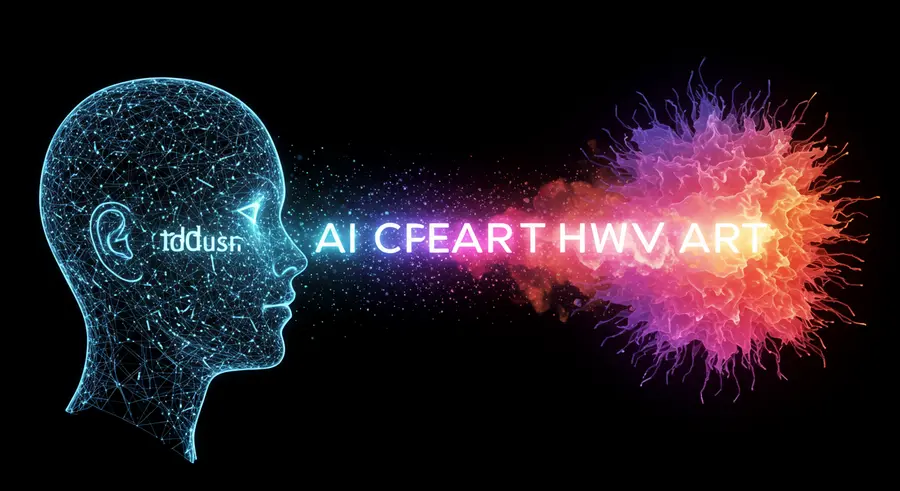AI as a Muse: Prompt Engineering in Creative Writing

The intersection of artificial intelligence and creative writing is a burgeoning field, offering writers new tools and collaborators. Prompt engineering sits at the heart of this revolution, enabling authors, poets, and screenwriters to guide Large Language Models (LLMs) in generating text, brainstorming ideas, overcoming writer's block, and even co-authoring entire narratives. This article explores how carefully crafted prompts can unlock AI's potential as a powerful creative partner.
For centuries, writers have sought inspiration from various muses. Today, AI, particularly through LLMs like GPT-4 or Claude, offers a new kind of muse—one that can respond, adapt, and generate content based on precise instructions. The 'art' in the "Art of Prompt Engineering" truly shines here, as the quality of AI-assisted creative output is directly proportional to the skill and nuance of the prompts provided.
Unlocking Creativity: How Prompts Shape AI's Literary Output
A well-designed prompt can be the difference between a generic, uninspired piece of text and a compelling, nuanced narrative. It's not just about asking an AI to "write a story," but about providing specific constraints, styles, tones, and even emotional arcs.
Key Elements of Effective Prompts for Creative Writing:
- Genre and Style Specification: Clearly define the genre (e.g., science fiction, fantasy, romance, thriller) and desired writing style (e.g., "in the style of Ernest Hemingway," "a whimsical, fairy-tale tone," "hard-boiled detective noir").
- Character Development: Provide detailed character descriptions, including motivations, flaws, relationships, and backstories. For example: "Generate a dialogue between a grizzled space pirate with a secret soft spot and a naive but brilliant young scientist who holds the key to a galactic treasure. The pirate is initially dismissive but gradually becomes intrigued."
- Plot Points and Structure: Outline key plot points, desired story arcs (e.g., Freytag's pyramid, Hero's Journey), or even specific scenes you want the AI to flesh out.
- Setting and Atmosphere: Describe the world in which the story takes place. Use sensory details in your prompt to evoke a specific mood or atmosphere. "Describe a bustling cyberpunk market at night, focusing on the neon lights, strange food stalls, and the underlying sense of danger. The air should feel thick with rain and secrets."
- Emotional Tone and Themes: Specify the desired emotional impact on the reader and the underlying themes to explore. For example, a prompt could ask for a story that is "bittersweet and hopeful, exploring themes of loss and resilience."
- Constraints and "Negative Prompts": Sometimes, telling an AI what *not* to do is as important as telling it what to do. For instance, "Avoid clichés common in fantasy epics" or "The protagonist should not be a chosen one."
Techniques for Advanced Creative Prompting
Beyond basic instructions, several advanced techniques can elevate your creative collaboration with AI:
1. Iterative Refinement:
Treat the first output from an AI as a draft. Use subsequent prompts to refine, expand, or redirect the narrative. You might ask the AI to:
- "Expand on the previous paragraph, adding more sensory details."
- "Rewrite this scene from the antagonist's perspective."
- "Introduce a sudden plot twist in the next chapter."
2. Role-Playing with the AI:
Instruct the AI to adopt a specific persona. For example: "You are a seasoned editor. Read the following passage and provide constructive criticism, focusing on pacing and character voice." Or, "You are a character in this story, the detective. What are your initial thoughts upon discovering the clue?"
3. Few-Shot Prompting:
Provide examples of the desired style or content within the prompt itself. This helps the AI better understand your expectations. For instance, you could include a short paragraph written in the target style before asking the AI to continue.
4. Chain-of-Thought (CoT) Prompting (Adapted for Creativity):
While often used for reasoning tasks, CoT can be adapted. Ask the AI to "think step-by-step" about how a character might react or how a plot point could unfold, before generating the actual prose. "Outline the possible motivations for the character's betrayal before writing the scene where it happens."
Examples of Prompts in Action:
Brainstorming Story Ideas:
Prompt: "Generate five unique story concepts for a young adult novel that combines elements of solarpunk optimism with a dystopian societal structure. Each concept should include a brief protagonist sketch and a central conflict."
Developing Dialogue:
Prompt: "Write a tense dialogue scene where two estranged siblings meet after ten years at their father's funeral. Sibling A is resentful and guarded. Sibling B is remorseful and seeking connection. The dialogue should be subtle, with unspoken emotions heavily implied."
World-Building:
Prompt: "Describe a hidden magical library accessible only through a forgotten subway station. Focus on the architecture, the types of books it might contain (e.g., grimoires bound in living wood, star charts that shift with real constellations), and the enigmatic librarian who guards it. The atmosphere should be ancient, slightly eerie, but also wondrous."
The Future of AI in Creative Writing
As LLMs become more sophisticated, their role in creative writing will undoubtedly expand. We might see AI tools that can:
- Maintain perfect continuity across hundreds of pages.
- Generate multiple plot variations based on a single premise.
- Adapt stories in real-time based on reader choices (for interactive fiction).
- Assist in translating nuanced literary styles across languages.
However, the human element—the spark of originality, the deep understanding of human experience, and the ultimate artistic vision—will remain paramount. Prompt engineering is the bridge that allows writers to harness AI's capabilities effectively, transforming it from a mere text generator into a true creative collaborator. The possibilities are as vast as the stories yet to be written. Explore resources like Writer's Digest for more insights into the craft of writing, which can inform your prompting strategies.
Ready to explore further? Delve into Effective Prompting Techniques to hone your skills.